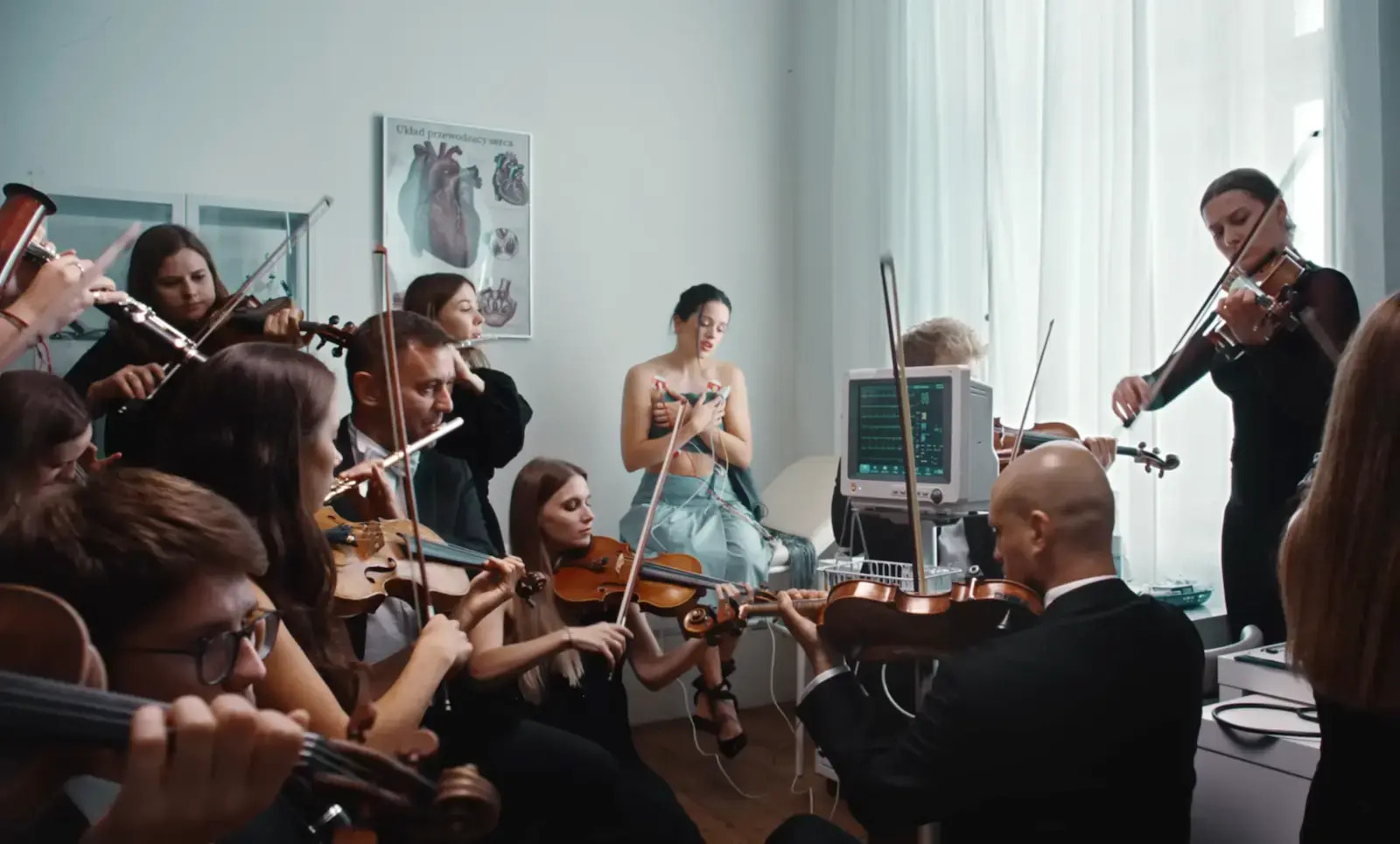Dear the artist’s English-speaking audience: you might be better off not knowing
I’m sure the moodboard for Rosalía’s LUX was beautiful: apples, pomegranates, sheet music. Simone Weil’s bespectacled scowl in black and white. Richly illustrated portraits of Rosalía’s favourite saints and mystics, some with links to the Catalonian’s life, like Saint Rosa of Lima, Ryōnen Gensō and Rabia al-Adawiyya; others seemingly plucked from the delirious corners of the neo-Catholic internet, like Jeanne d’Arc and Santa Teresa de Ávila. Arabic script, Cyrillic characters and medieval black-lettering. Red ribbon bows, French verdure tapestries and glistening glasses of Sauvignon Blanc. It could’ve been great.
If you’ve watched even 30 seconds of Rosalía’s latest press tour, you probably already know that the singer-songwriter’s new album is written and performed in 14 languages: her native Spanish and Catalan, English, French, German, Portuguese, Japanese, Hebrew, Arabic, Ukrainian, Mandarin, Latin, Sicilian and Italian – the Tower of Babel pressed into two ‘crystal clear’ 12-inch records. She told The New York Times that she spent a whole year working on just the lyrics. ‘Constant back and forths’ between Google Translate and proper translators, ‘a lot of trying to understand how other languages work’, but ‘it’s about intuition also’. Each language points to a female mystic or Catholic saint, and her chosen tongue sometimes informs the music too: in Berghain, Rosalía sings to Benedictine abbess Hildegard von Bingen in German accompanied by Wagnerian dramatics from the London Symphony Orchestra; Memória is a fado-inflected ballad sung in Portuguese.
The reactions from the English-speaking world have thus far hailed LUX as a once-in-a-generation triumph. Rolling Stone ran not one but two rave reviews, one that called it ‘stunning’ and another that gave it five stars and called it a ‘transcendent album that sounds like nothing else in music right now’. The week ahead of the official launch, I personally ran into two people who attended the New York listening party and described it as nothing short of a revelation.
But the reaction among Spanish speakers, myself included, differed vastly. On Twitter/X a fan noted in, well, the most Spanish way possible, that the instrumentality is excellent and she sings like a goddess but that the lyrics utter ‘gilipolleces en varios idiomas’ (‘total nonsense in a variety of languages’). Another listener retweeted a fan account’s list of her rave reviews from publications across the globe with a retort claiming that no Spanish-language publication has given a rave review because the lyrics ‘sinceramente, son una mierda’ (‘are, honestly, total shit’). And they’re not wrong. Ayelén Cisneros, writing for Rolling Stone en Español, wonders if a propensity for gimmicks – the references and the languages – undermined Rosalía’s efforts. Allow me to translate: ‘Is it great to hear Rosalía name the saints she’s inspired by (but fails to mention or paraphrase in the songs)? Yes, amazing. Is it necessary in order to listen to a record that squeezes 14 languages into a single hour? No.’ Mondo Sonoro, an indie magazine founded in 1995 in Barcelona, called the dozen-plus languages excessive ‘turismo lingüístico’.
All that talk of polyglot singing put a good deal of emphasis on lyrics, and the translations to English that featured prominently at the listening parties and on Spotify forced us to examine them closely and confront their awkwardness: in the German of Berghain, a “flame penetrates my brain, like a lead teddybear”. In La Yugular, violins swell as Rosalía describes a series of nesting images, “an army fits in a golf ball / and a golf ball takes up the Titanic / and the Titanic fits in a lipstick tube”. I wish I could say this sounds better in the original Spanish, but it barely makes a difference.
When people praise Rosalía’s talents, they talk about her singing, the vocal arabesques and virtuous breath control she brings to every studio session and live performance. They talk about her avant-pop production and illustrious collaborators, from Björk to J Balvin. Fans are quick to dismiss that time she claimed to be Latina (she’s not) and celebrate, instead, her chameleonic shifts from new flamenco to urbano; from Almodóvar’s set to the next season of Euphoria.
But I have to wonder if her exoticism – her Spanish lisp, strategic cultural maneuvers, charming interviews, exhaustive referencing – to the non-Spanish listener’s ignorance, combined with the Spanish listener’s eagerness for a homegrown international popstar, and her honest-to-God singing chops, are all casting a beautiful mantilla over something seriously mediocre. Trendy visuals and thematic interviews might entertain fans, but it will take much more than 31 days of celibacy to become the patron saint of avant-pop. Singing in 13, or 14 or 15 languages can only do so much. And by drawing our attention to the lyrics, she’s risked us seeing right through them.
Read next Lorde’s Virgin completes the next golden age of pop
